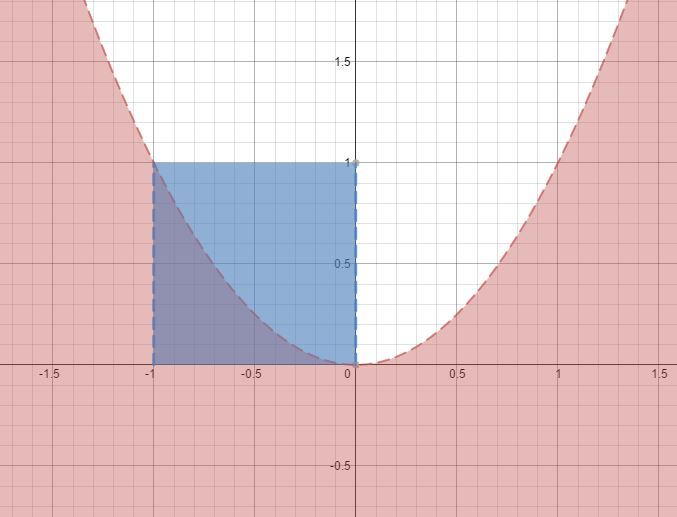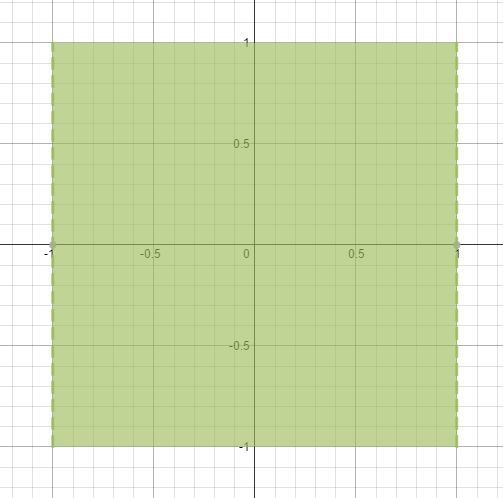Probable Positive Quadratika
The values of are equally possible in the square . Find the probability (up to 3 decimal points) that the roots of the quadratic trinomial are positive.
Practice the set Target JEE_Advanced - 2015 and boost up your preparation.
The answer is 0.083.
This section requires Javascript.
You are seeing this because something didn't load right. We suggest you, (a) try
refreshing the page, (b) enabling javascript if it is disabled on your browser and,
finally, (c)
loading the
non-javascript version of this page
. We're sorry about the hassle.
Since the leading co-efficient is positive, the parabola would be facing upwards with both its zeroes in the right-side of the Y − a x i s . So, on the Y − a x i s , the Y co-ordinate has to be positive.
Let the given polynomial be p ( x ) .
So we have p ( 0 ) > 0
On substituting x by 0 , we get the inequality b > 0 .
Now, since it has real roots, its discriminant or D is positive, which tells us ( 2 a ) 2 − 4 ( 1 ) ( b ) > 0 Or ultimately b < a 2
Since, the minima lies in x > 0 , if we differentiate it and put it equal to zero, we should get a value of x , greater than zero.
Differentiating, we get 2 x + 2 a = 0 or x = − a
Since x is positive, a has to be negative. So we have a < 0
Now we have covered all conditions.
For a , intersecting all inequalities we get, a ∈ [ − 1 , 0 ) .
For b , intersecting all inequalities we get, b ∈ ( 0 , 1 ] and also b < a 2 .
So, for these conditions, if we plot the inequality a 2 on a b / a graph, we get
Here the blue area shows the required domains/ranges for a and b .
So the probability of getting real roots is equal to T o t a l A r e a b o u n d b y k n o w n i n e q u a l i t i e s R e d A r e a ∩ B l u e A r e a .
Here the known inequalities are the inequalities given in the question. The area bound by them is 4 s q u n i t s . See this figure for help.
And the value of R e d A r e a ∩ B l u e A r e a is ∫ − 1 0 a 2 d a
This is equal to 3 1 .
So our required answer is 4 3 1 = 1 2 1
Please upvote if you liked the solution.